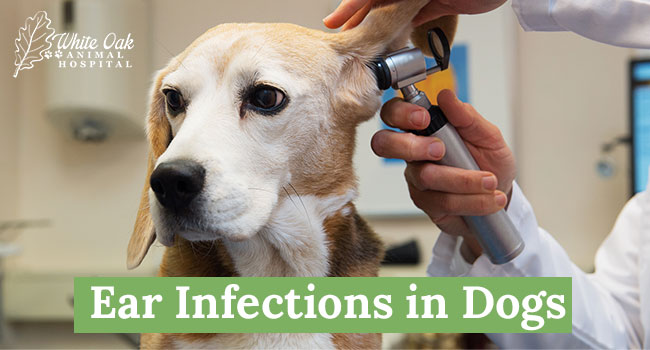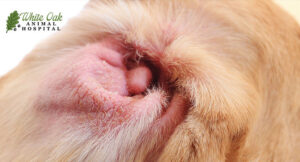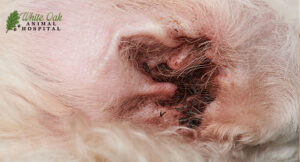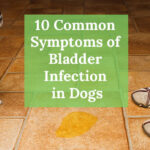
How do dogs get ear infections? Understanding this is crucial to preventing and treating this uncomfortable condition. These infections typically occur when bacteria, yeast, or other pathogens invade the ear canal, often due to moisture buildup, allergies, or foreign objects. Symptoms include itching, redness, swelling, and a foul odor.
 Recognizing the signs of ear infections early can make a significant difference in your dog’s health. If you notice your pet frequently shaking their head, scratching at their ears, or showing other signs of discomfort, it could be an indication of an infection. Knowing how dogs get ear infections enables you to take proactive steps in their care, such as regular ear cleaning and ensuring their ears remain dry.
Recognizing the signs of ear infections early can make a significant difference in your dog’s health. If you notice your pet frequently shaking their head, scratching at their ears, or showing other signs of discomfort, it could be an indication of an infection. Knowing how dogs get ear infections enables you to take proactive steps in their care, such as regular ear cleaning and ensuring their ears remain dry.
Preventing ear infections is equally important as treating them. Regular cleaning, using appropriate products, and keeping your dog’s ears dry can reduce the risk of infection. Additionally, managing underlying health issues like allergies can further protect your dog. By being aware of how dogs get ear infections, you can help your pet maintain healthy ears and avoid the discomfort and potential complications of this common issue.
Understanding Ear Infections in Dogs
Ear infections in dogs are a common yet serious health issue that can significantly impact their overall well-being. These infections typically occur when harmful microorganisms, such as bacteria or yeast, invade the ear canal, leading to inflammation and discomfort. Understanding how dogs get ear infections is essential for pet owners to prevent and manage these conditions effectively.
 The delicate nature of the ear canal makes it particularly susceptible to infections. Common symptoms include itching, redness, swelling, and a noticeable odor emanating from the ear. Dogs might shake their heads frequently, scratch at their ears, or show other signs of distress when suffering from an ear infection. In severe cases, untreated ear infections can result in hearing loss or permanent damage to the ear canal.
The delicate nature of the ear canal makes it particularly susceptible to infections. Common symptoms include itching, redness, swelling, and a noticeable odor emanating from the ear. Dogs might shake their heads frequently, scratch at their ears, or show other signs of distress when suffering from an ear infection. In severe cases, untreated ear infections can result in hearing loss or permanent damage to the ear canal.
So, how do dogs get ear infections? There are several contributing factors. Moisture trapped in the ear canal from activities like swimming or bathing can create an ideal environment for microorganisms to thrive. Allergies and underlying health conditions, such as diabetes or hormonal imbalances, can also increase a dog’s risk of developing an ear infection. Additionally, the presence of foreign objects, like grass seeds or dirt, can irritate and lead to an infection. By understanding how dogs get ear infections, pet owners can take proactive steps to reduce the risk and ensure their furry friends stay healthy.
How Do Dogs Get Ear Infections?
Allergies
Allergies are a frequent cause of ear infections in dogs. When considering how dogs get ear infections, it’s important to note that allergies, whether from food, pollen, or dust, can lead to inflammation in the ear canal. This inflammation creates an environment where infections can develop more easily. Dogs with allergies might also scratch at their ears more often, leading to further irritation and potential infection. Managing allergies with proper medication and avoiding known triggers can help reduce the risk of ear infections.
Ear mites
Ear mites are tiny parasites that live in the ear canal. They feed on the ear’s wax and oils, leading to intense itching and inflammation. As the dog scratches or shakes their head to relieve the itching, this can further irritate the ear canal and potentially cause an infection. If ear mites are suspected, a vet can confirm their presence and provide appropriate treatment to eliminate these parasites and prevent further infections.
Bacterial and Yeast Infections
How do dogs get ear infections? Bacterial and yeast infections are common in dogs’ ears due to an imbalance in the ear’s natural environment. Factors such as allergies, poor ear hygiene, or moisture buildup can contribute to this imbalance, allowing bacteria and yeast to overgrow and cause infection. Regular cleaning and addressing any underlying issues are essential to prevent these infections. If an infection does occur, a vet can prescribe medication to treat it and restore balance in the ear.
 Foreign Objects
Foreign Objects
How do dogs get ear infections? One common cause is the presence of foreign objects, such as grass seeds or small debris, that can become lodged in a dog’s ear canal. These objects can lead to irritation, scratching, and inflammation, creating an environment where an ear infection can easily develop. If you suspect that a foreign object is the culprit behind your dog’s ear issues, it’s crucial to consult a veterinarian. A vet can safely remove the object and provide the necessary treatment to prevent or manage any resulting ear infection. Regular ear checks and cleanings can also help reduce the risk of infections caused by foreign bodies.
Excess Moisture
Wondering how dogs get ear infections? Bacterial and yeast infections are common culprits in dogs’ ears. These microorganisms can overgrow due to an imbalance in the ear’s natural environment. Factors like allergies or poor ear hygiene can contribute to this imbalance, allowing bacteria and yeast to thrive. Regular cleaning and addressing any underlying issues can help control these infections. A vet can prescribe medication to treat these infections and restore balance in the ear.
Spotting the Symptoms of Ear Infections
 Ear infections in dogs are a common concern, and understanding how dogs get ear infections is crucial for pet owners to address the issue promptly. One of the first signs to observe is frequent scratching or rubbing of the ears. This behavior often indicates discomfort and is a key symptom in understanding how dogs get ear infections. The itching caused by the infection prompts dogs to scratch their ears, attempting to relieve the irritation. If your dog is scratching more than usual, it might be a sign of an ear infection that requires immediate attention.
Ear infections in dogs are a common concern, and understanding how dogs get ear infections is crucial for pet owners to address the issue promptly. One of the first signs to observe is frequent scratching or rubbing of the ears. This behavior often indicates discomfort and is a key symptom in understanding how dogs get ear infections. The itching caused by the infection prompts dogs to scratch their ears, attempting to relieve the irritation. If your dog is scratching more than usual, it might be a sign of an ear infection that requires immediate attention.
Another common symptom to watch for is head shaking. Dogs often shake their heads to dislodge irritants or alleviate discomfort in their ears. This behavior is another indicator when exploring how dogs get ear infections. Frequent or vigorous head shaking can signal that your dog is experiencing pain or irritation in the ear canal, suggesting the presence of an infection that needs to be addressed.
An unpleasant odor emanating from your dog’s ear is also a strong indication of an ear infection. This foul smell is typically due to bacterial or yeast overgrowth, which is a common factor in how dogs get ear infections. Detecting such an odor should prompt you to investigate further, as it could be a sign of an infection that requires treatment.
Redness and swelling in the ear are visual cues that provide insight into how dogs get ear infections. Inspecting your dog’s ears for these signs can reveal inflammation, indicating that an infection is present. Immediate action is necessary to prevent the condition from worsening and to ensure your dog’s comfort and health.
Preventing Ear Infections in Dogs
Preventing ear infections in dogs is essential for their overall health and comfort. To better understand how dogs get ear infections and how to prevent them, start with regular ear cleaning. Use a veterinarian-recommended solution to gently clean your dog’s ears, removing dirt and excess wax that can contribute to infections. Keeping your dog’s ears dry is also important. Moisture trapped in the ear canal, often from swimming or bathing, can create an ideal environment for infections. After your dog has been in the water, make sure to dry their ears thoroughly to reduce the risk.
Monitoring for signs of allergies or ear mites is another effective way to prevent ear infections. Allergies can lead to inflammation and itching, increasing the likelihood of infections. If you notice symptoms like itching or red skin, consult your vet to understand how dogs get ear infections from these underlying causes. Ear mites, which can cause significant irritation, should also be checked regularly. If you suspect your dog has ear mites, seek veterinary advice to prevent these parasites from leading to infections.
 Routine veterinary check-ups are a crucial part of preventing ear infections. Regular visits allow your vet to detect and manage potential issues before they escalate into infections. Your veterinarian can also provide personalized advice on ear care tailored to your dog’s specific needs. By understanding how dogs get ear infections and taking these preventative steps, you can significantly reduce the risk of ear infections, helping to ensure that your dog stays healthy and comfortable.
Routine veterinary check-ups are a crucial part of preventing ear infections. Regular visits allow your vet to detect and manage potential issues before they escalate into infections. Your veterinarian can also provide personalized advice on ear care tailored to your dog’s specific needs. By understanding how dogs get ear infections and taking these preventative steps, you can significantly reduce the risk of ear infections, helping to ensure that your dog stays healthy and comfortable.
Understanding how dogs get ear infections is vital for preventing and addressing this common issue. Regular ear care and prompt attention to any signs of infection are essential for your dog’s health. If you suspect your dog has an ear infection or need guidance on prevention, consider visiting White Oak Animal Hospital. With over 28 years of experience, White Oak offers a comprehensive approach to veterinary care. Our integrative options, including TCVM Telemedicine consultations, provide specialized care that may not be available elsewhere. Our experienced team is dedicated to offering the best solutions tailored to your pet’s needs. For expert care and personalized treatment, White Oak Animal Hospital is a trusted choice for maintaining your dog’s health and well-being.
Frequently Asked Questions
How often should I clean my dog’s ears?
Regular ear cleaning depends on your dog’s breed and ear health. Generally, cleaning once a month is sufficient for most dogs. However, dogs with a history of ear infections or those with floppy ears may need more frequent cleaning. Consult your vet for personalized advice.
Can ear infections in dogs be contagious to other pets?
Ear infections in dogs are typically not contagious to other pets. They are usually caused by factors like allergies, mites, or bacteria, which are specific to each dog. However, maintaining good hygiene and regular vet check-ups can help prevent the spread of infections.
What should I do if my dog has a lot of ear discharge?
If your dog has significant ear discharge, it’s essential to consult your veterinarian. The discharge could indicate a bacterial or yeast infection, which requires professional treatment. Your vet will be able to diagnose the issue and recommend the appropriate treatment.
Are there any home remedies for ear infections in dogs?
While some home remedies may provide temporary relief, they are not a substitute for professional veterinary care. Home treatments such as cleaning with diluted apple cider vinegar may help, but it’s crucial to get a proper diagnosis and treatment plan from your vet.
Related Posts
-
Effective Home Remedies for Dog Ear Infections: Addressing 5 Common Causes
Home remedies for dog ear infections can offer a practical and cost-effective solution to ear…
-
Nose Dripping in Senior Dogs: 6 Common Causes You Can't Ignore, When to Worry and What to Do Next
Nose dripping in senior dogs is very common. This phenomenon is often considered a typical…
-
10 Common Symptoms of a Bladder Infection in Dogs You Should Know to Protect Your Furry Friend
Bladder infections in dogs, also known as urinary tract infections (UTIs), are common health issues…
-
5 Common Causes of Dog Limping on the Back Leg: A Comprehensive Guide
A dog limping on the back leg is a concerning and prevalent issue among pet…









